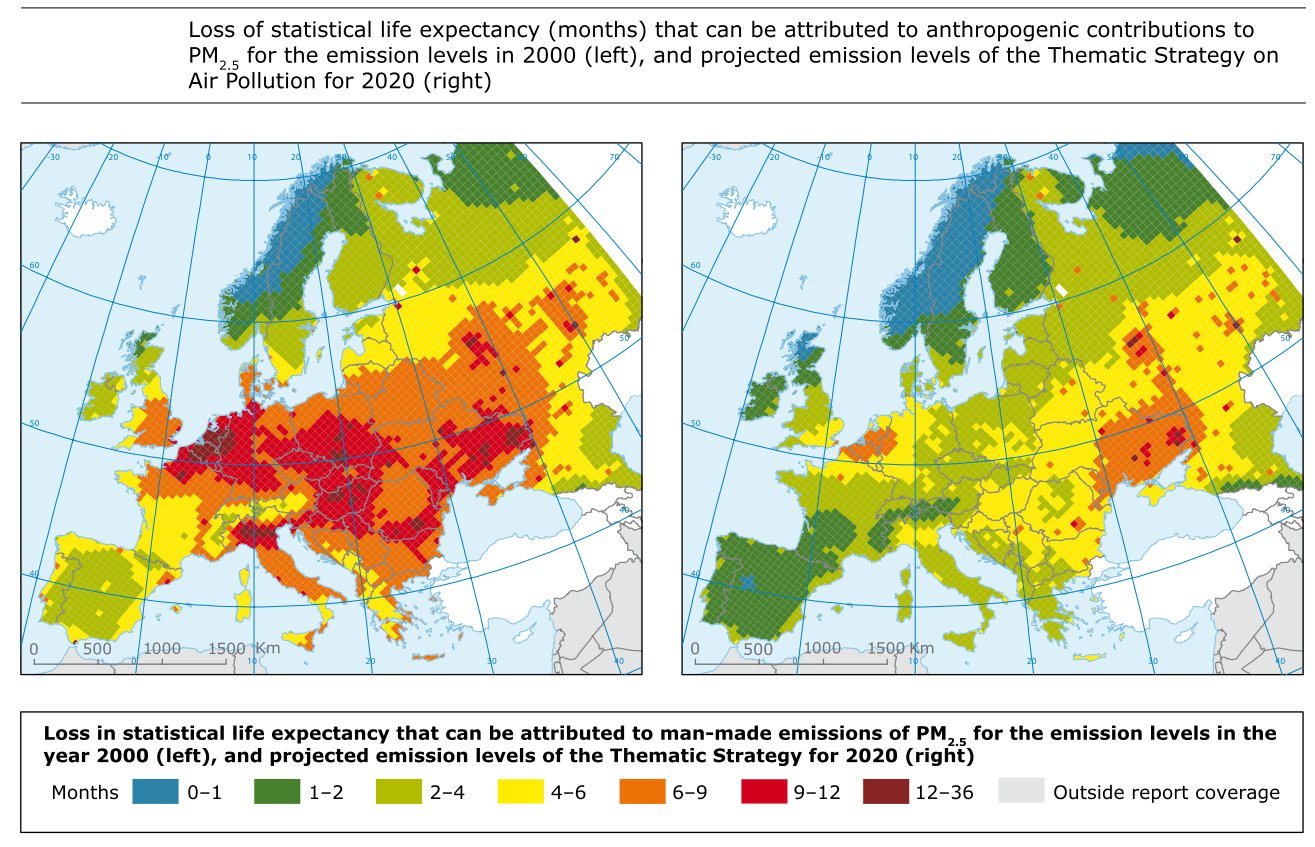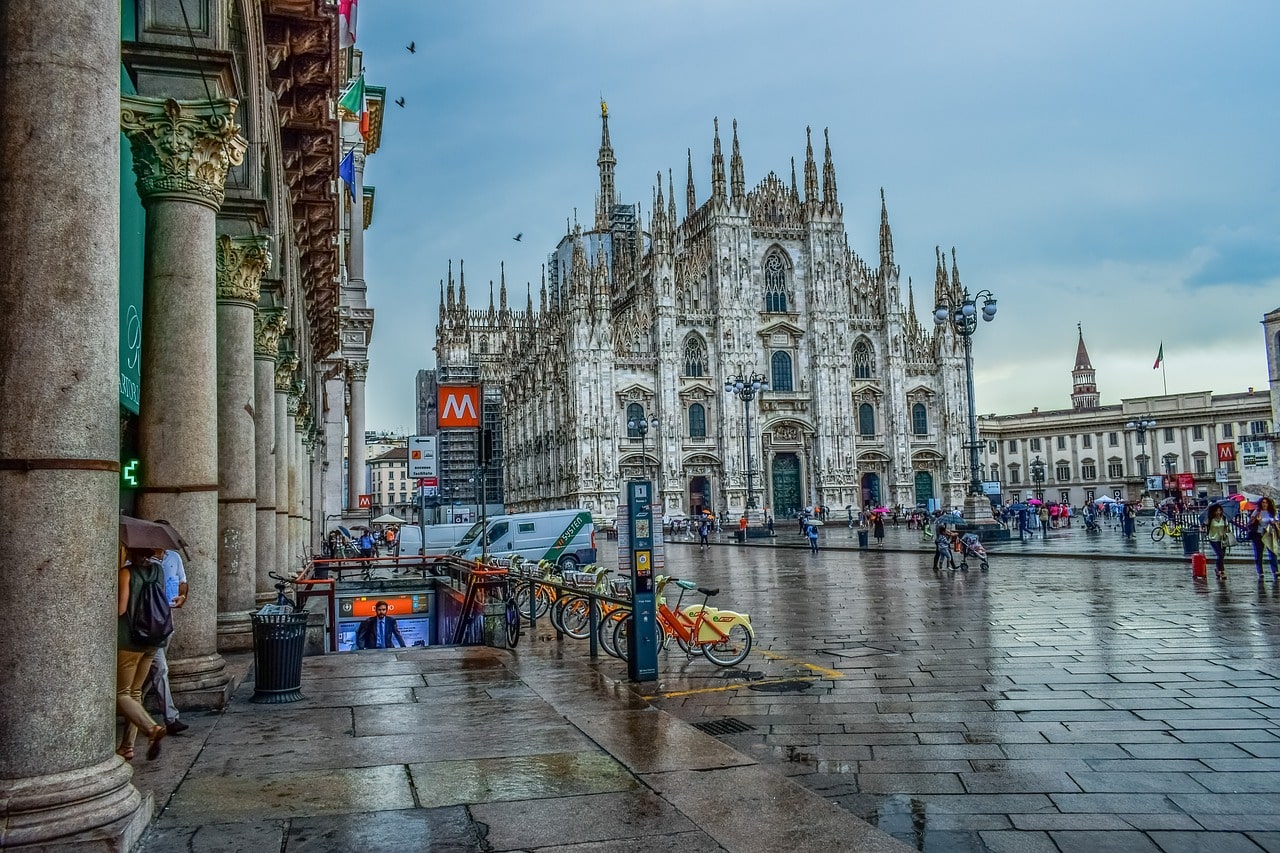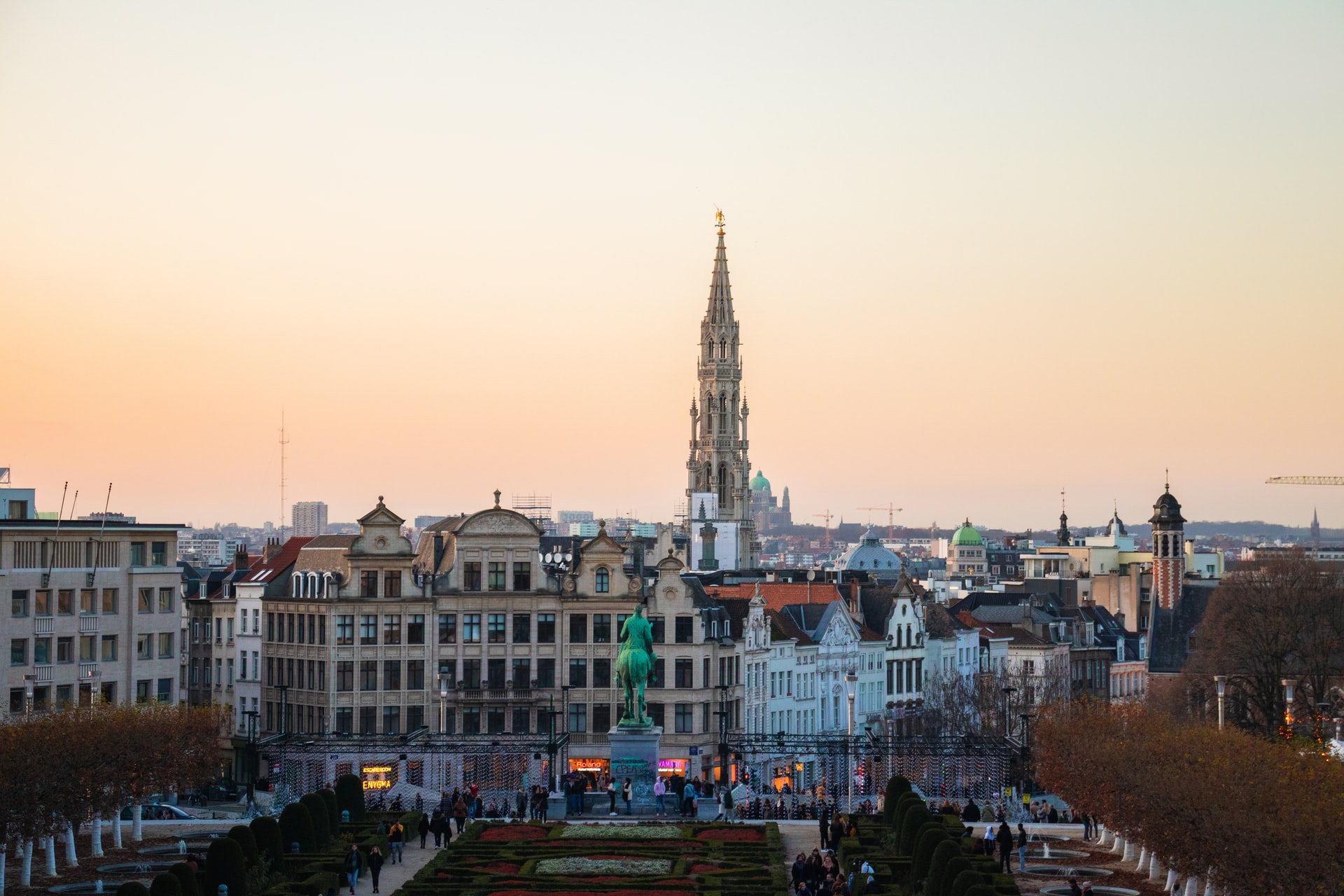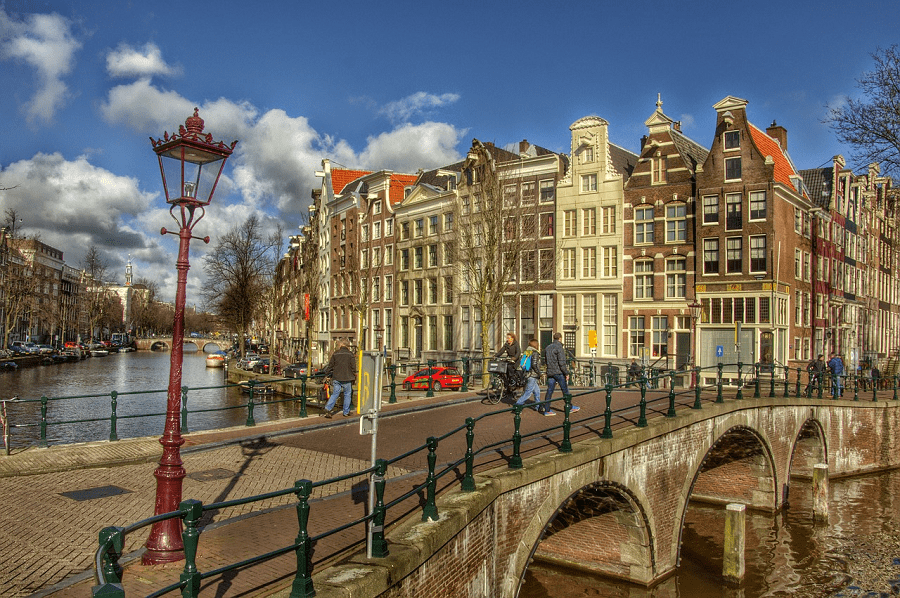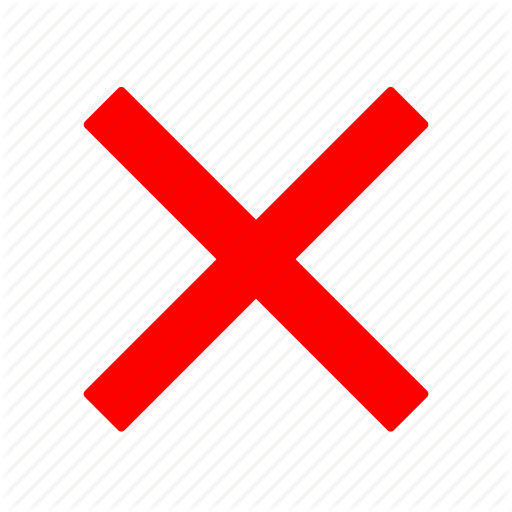Low Emission Zones (LEZs) are areas where the most polluting vehicles are regulated. Usually this means that vehicles with higher emissions cannot enter the area. In some low emission zones the more polluting vehicles have to pay more if they enter the low emission zone.
There are increasing numbers of Zero Emission Zones in operation, preparation or planning. These are zones where only Zero Emission Vehicles are allowed in. This means Battery Electric or Hydrogen Fuel Cell Vehicles. For some plug-in hybrid vehicles may be allowed entry for an interim period, together with geofencing.
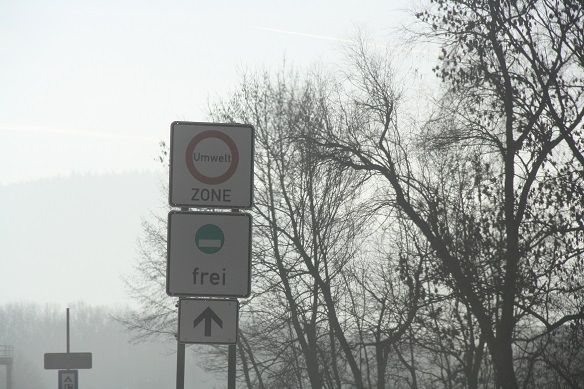


This page answers three key questions about Low Emission Zones
- What are Low Emission Zones?
- Why Low Emission Zones?
- What and Why Zero Emission Zones?
- Where are Low Emission Zones in Europe?
- What are Emergency Smog Schemes?
- Further information on air quality
What are Low Emission Zones?
Low Emission Zones (LEZs) are areas where the most polluting vehicles are regulated. Usually this means that vehicles with higher emissions cannot enter the area. In some low emission zones the more polluting vehicles have to pay more if they enter the low emission zone.
Low Emission Zones are also known as:
- Environment Zones,
- Umweltzonen (Germany),
- Milieuzones (Netherlands),
- ZCR, Zone à Circulation Restreinte (France)
- Lage-emissiezone (Belgium)
- Clean Air Zones (England)
- Miljøzone (Denmark),
- Miljözon (Sweden),
- Lavutslippssone (Norway),
- Alacsony Kibocsátási Övezet (Hungary),
- ZTL ambiente (Italy).
Low Emission Zones are often the most effective measure that towns and cities can take to improve air pollution. Low emission zones reduce emissions of fine particles, nitrogen dioxide and (indirectly) ozone. These are the three main air pollutants of concern in Europe.
Fine particulates are also known as PM10 (particulate matter less than 10 micrometre in diameter) or PM2.5 (particulate matter less than 5 micrometre in diameter). A micrometre (μm) is a millionth of a metre (A human hair is about 90 µm in diameter). These fine particulates enter our bodies through its defences and cause damage to our hearts and lungs.
Vehicle emissions are classified in Europe by the "Euro standards". In some LEZs fitting a diesel particulate filter can allow a vehicle access to a LEZ.
Before you travel into a low emission zone, you first need to find out if your vehicle is affected.
- Most low emission zones affect buses and coaches
- Most low emission zones affect heavy duty goods vehicles (usually over 3.5 tonnes Gross Vehicle Weight (GVW))
- Some LEZs also affect
Find out which vehicles are affected in the city you wish to enter through our city search (above, in the top part of this page, under the menus).
Next you need to find out the emissions standards of your vehicle. Then check if this emissions standard is allowed into the zone.
Most LEZs operate 24 hours a day, 365 days a year. The largest exception to this is some of the Italian LEZs which are not in operation permanently. However, this number is reducing.
Why Low Emission Zones?
LEZs are implemented in areas where air pollution levels are dangerous to health. LEZs improve the air quality and make it safer to breathe.
Air pollution can lead to poor health and to death. It has huge costs, in both health and money:
- Air pollution is responsible for 310 000 premature deaths in Europe each yeari.
- Air pollution causes more premature deaths than road accidents.
- The human health damage from air pollution is estimated to cost the European economy between €427 and €790 billion per yeariii.
Air pollution most affects the very young and the old and those with heart and lung diseases. Heart and lung diseases are both common causes of death in Europe. Air pollution also triggers health problems like asthma attacks and increases hospital admissions and days off sick.
Diesel emissions have been classified as carcinogenic (causing cancer) by the World Health Organisation, which means that reducing diesel emissions is especially important for health. You can find out more details on these issues from the World Health Organisation air quality pages.
We can also consider the impact of air pollution on life expectancy [how long people can expect, on average, to live].
The following map left hand map shows an estimate of how many months life expectancy was reduced by man-made fine particles across Europe in 2000. The right hand map shows the months estimated when the many measures for air pollution have been implemented, in 2020iv. This shows the improvement that can be achieved with different air quality measures, for example cleaner Euro standards and Low Emission Zones.
© European Environment Agency (EEA)
The third map below shows the estimated years of life lost (YOLL) in 2005 attributable to long-term PM2.5 exposurev. This shows slightly different things, but gives a guide to the improvements from the year 2000 above.
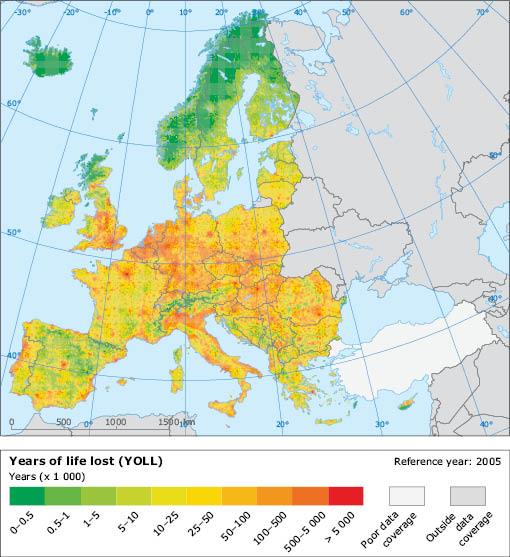
© European Environment Agency (EEA)
Because of this danger to health, many countries around the world, as well as the European Union (EU), have set air quality standards. These usually include concentration limits to be met by set dates. It is in order to help meet these EU Air Quality Standards that low emission zones are being implemented.
There are many other measures that cities, countries and the European Union are taking to improve air quality in Europe. Traffic is one of the main pollution sources in towns and cities. Low Emission Zones are one of the key ways cities can reduce emissions from road traffic.
Zero emission zones (ZEZ) are implemented for two main reasons; reducing local pollution and reducing climate emissions. They can also contribute to a nice quality of life within, and to a certain extent also outside, the zone. Where there is significant amounts of renewable energy available, electric or fuel cell vehicles can use less energy than most conventional vehicles. This is particularly for heavily used urban vehicles (such as delivery vehicles), where any increased resources required for the zero emission vehicle are more quickly compensated for. Zero emission vehicles are also quieter and have no local pollutants.
There are two main ways of implementing a ZEZ, either removing the traffic, or removing the vehicle's internal combustion engine (petrol, diesel, gas engine). Often it is a combination of both, trying to reduce vehicle traffic, and those vehicles that are allowed entry need to be zero emission vehicles (ZEVs). A pedestrian zone where the vehicles allowed in are zero emission would be one type of ZEZ. Another might be a low emission zone having the standards tightened to become a zero emission zone.
Some ZEZs, for example in the Netherlands, are ZEZ-logistics, where the delivery vehicles need to be zero emissions. This focuses the requirements on the heavily used urban vehicles.
What are Emergency Smog Schemes?
In some cities, when high pollution is expected, or after a certain number of days of high pollution, there are restrictions on vehicle usage, often combined with restrictions on solid fuel burning (eg wood or coal fires).
We have information on most of these schemes on our city pages. Information on whether the scheme is in place or not can be found on the links from our city pages, also in the local radio, newspapers and city websites.
Well known schemes include the Stuttgart Feinstaub Alarm (now no longer in operation) or the city and regional schemes in France and northern Italy.
Further Information on Air Quality
Useful sources of further information on air quality include:
The European Environment Agency
European Commission Air Quality page

